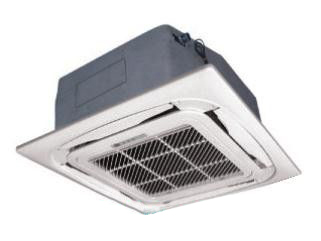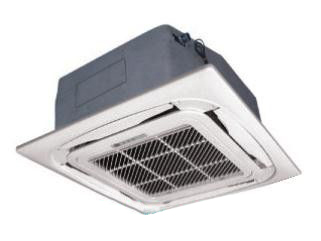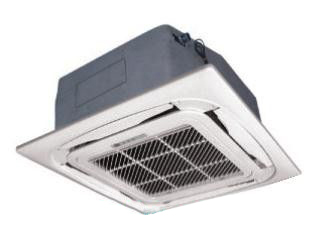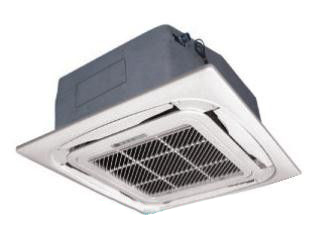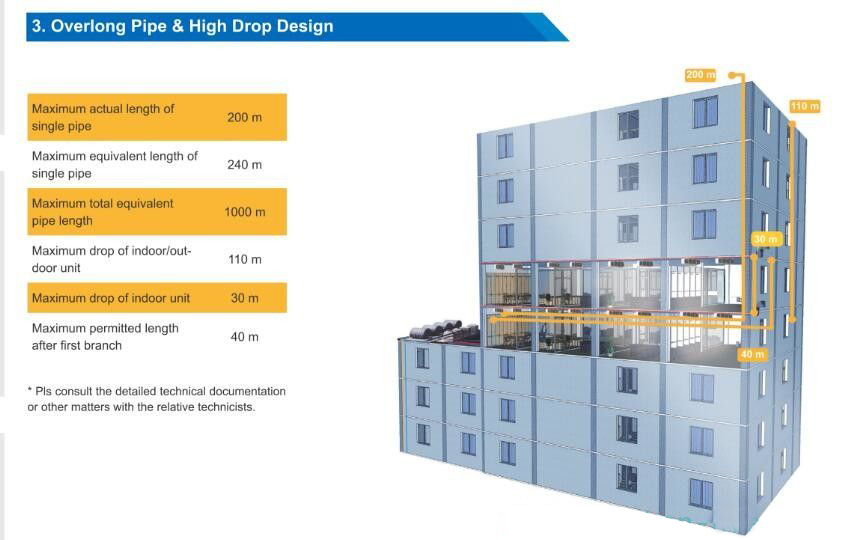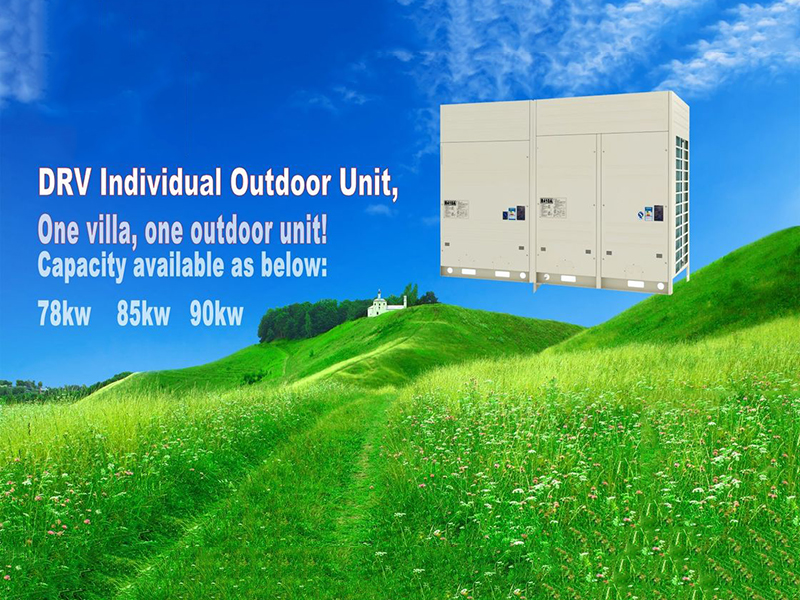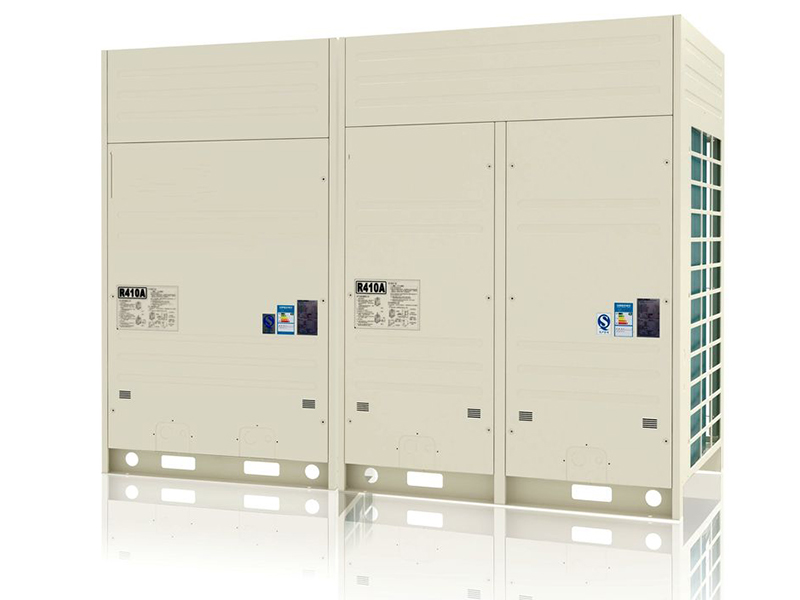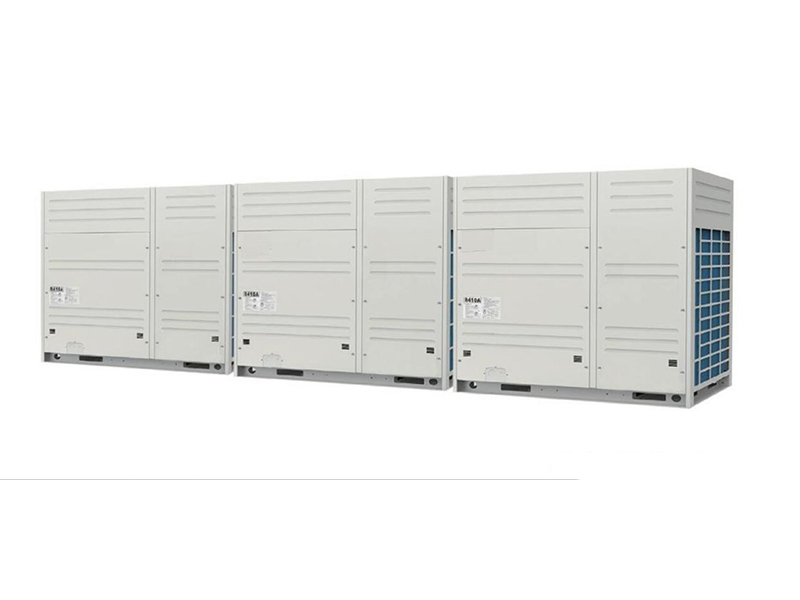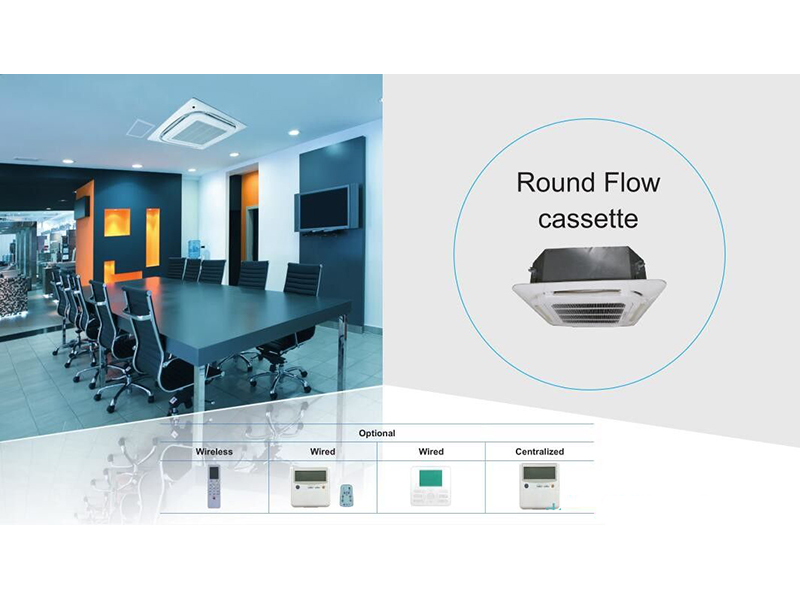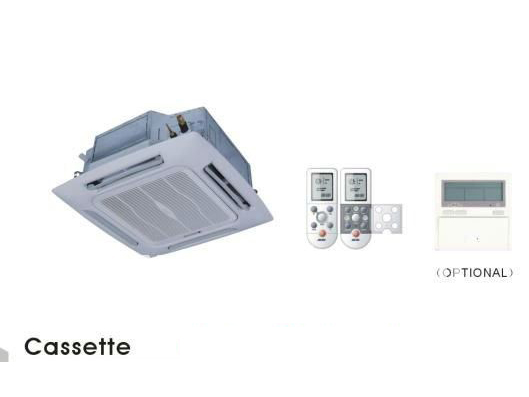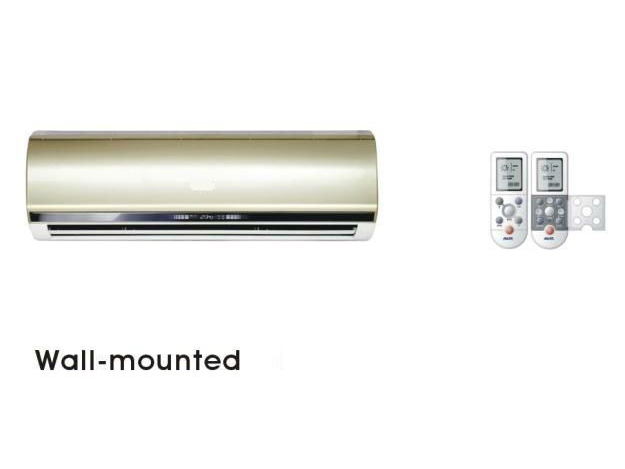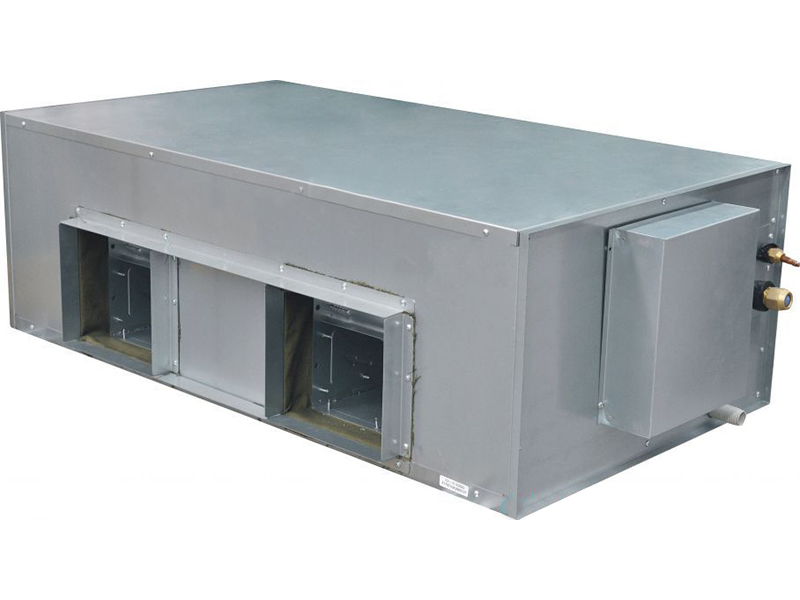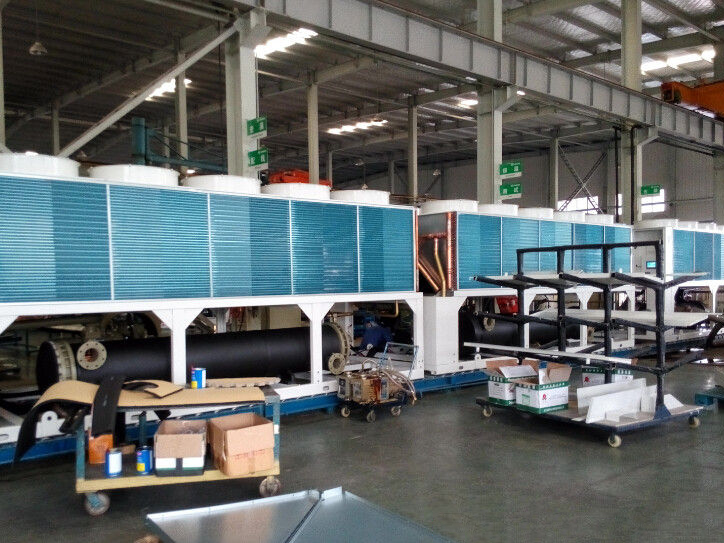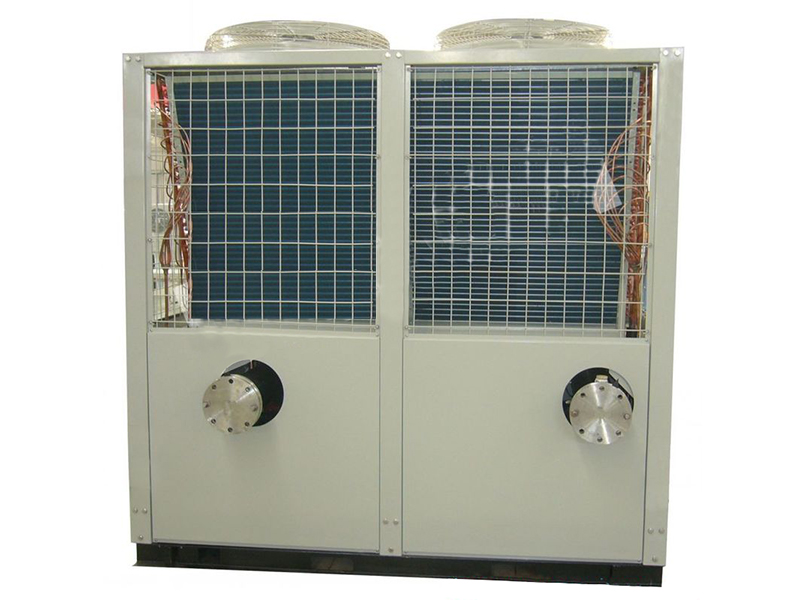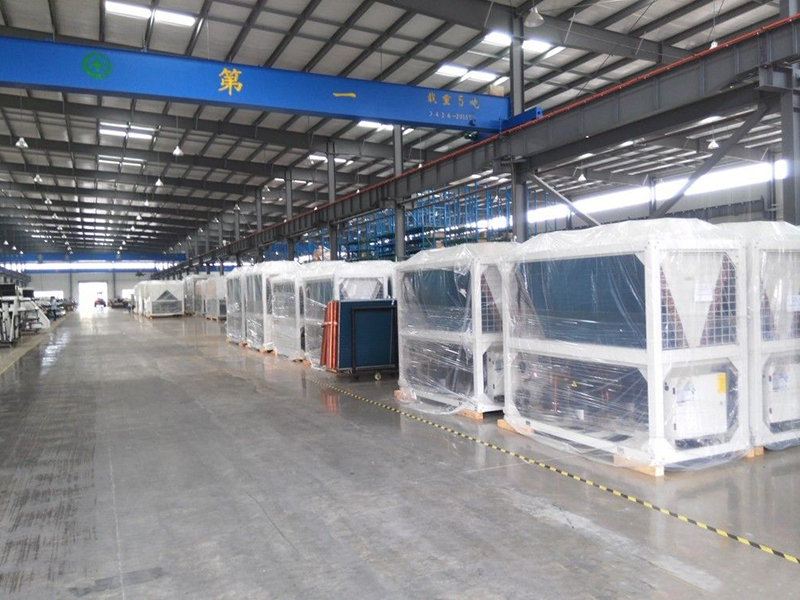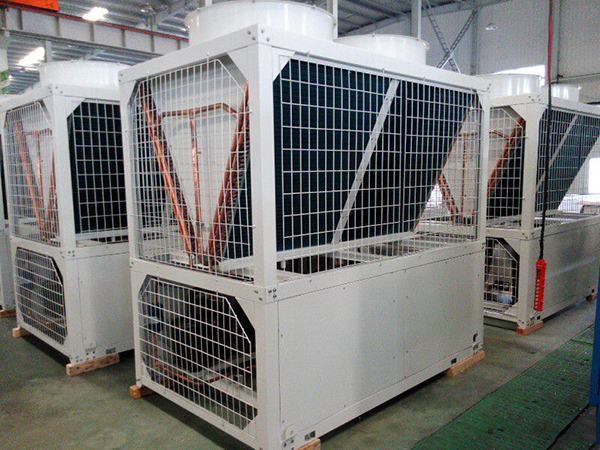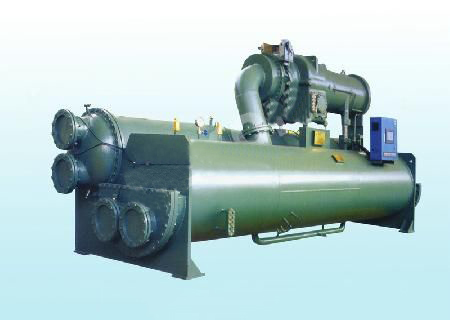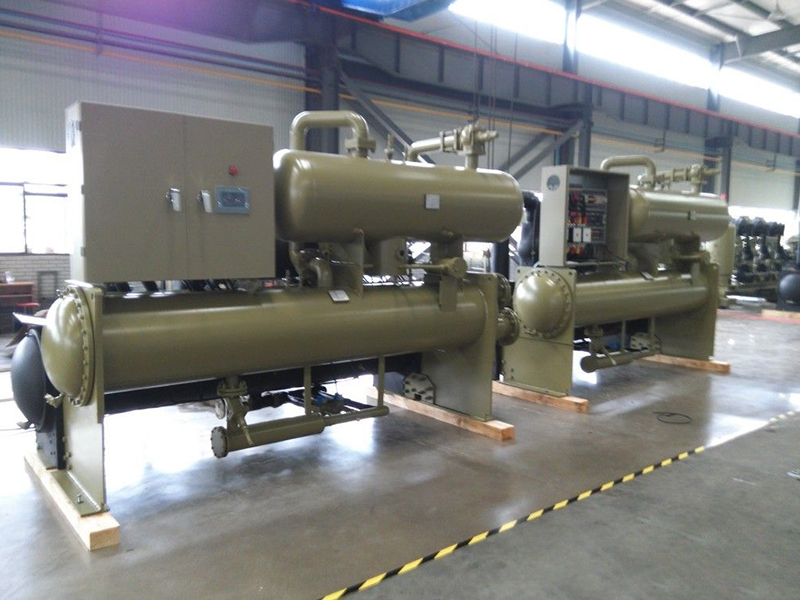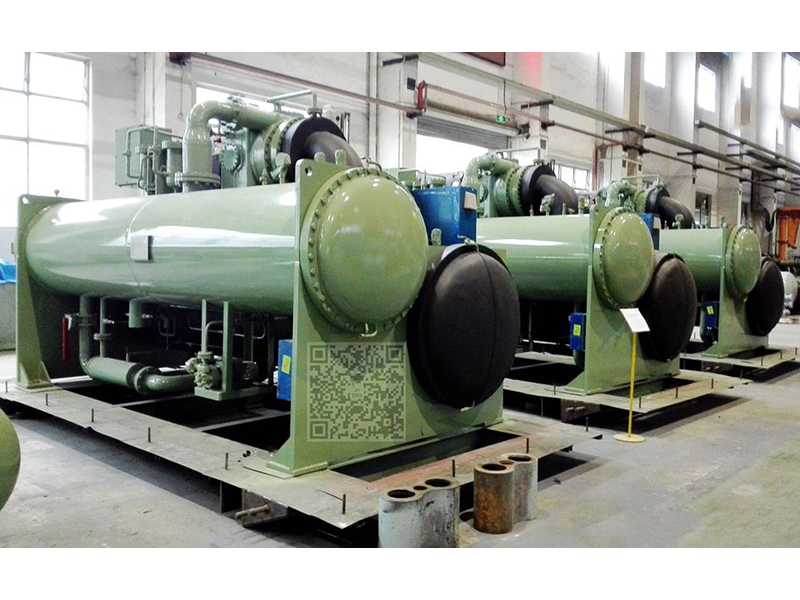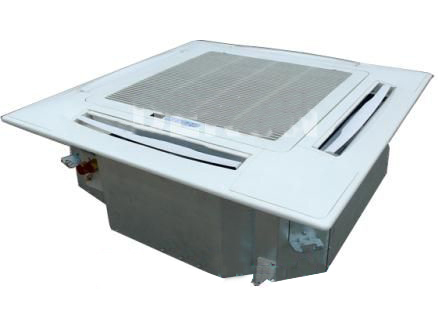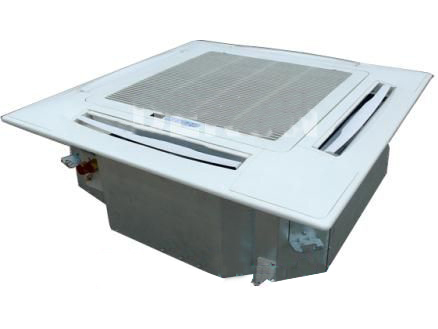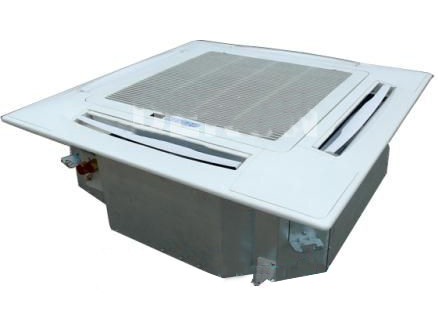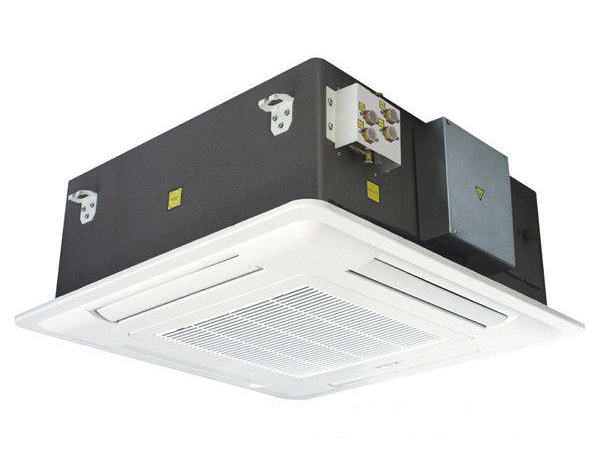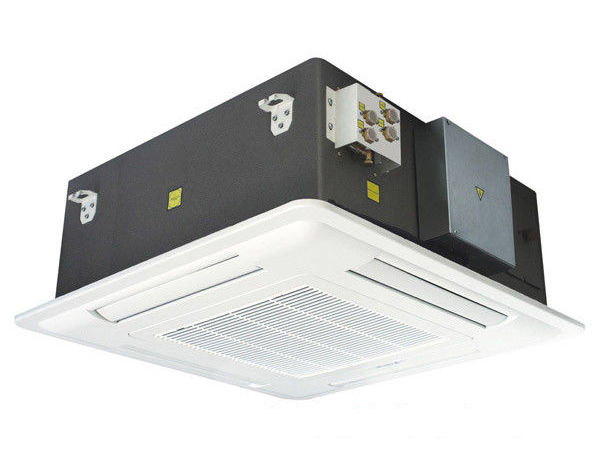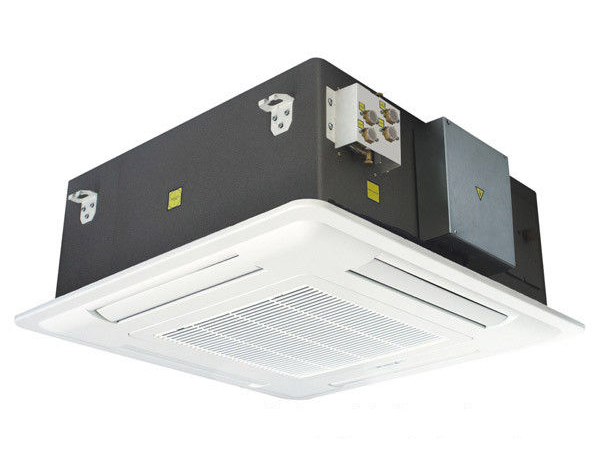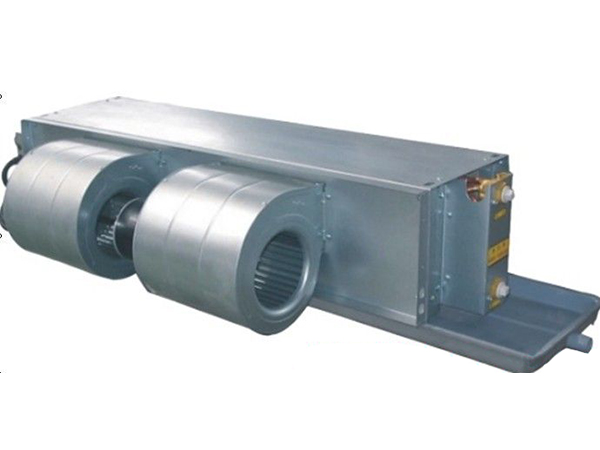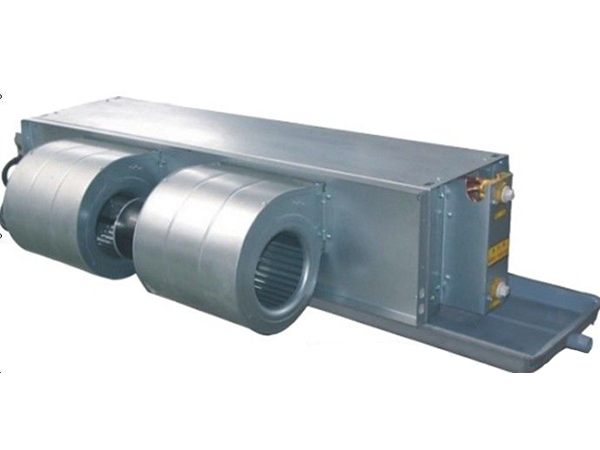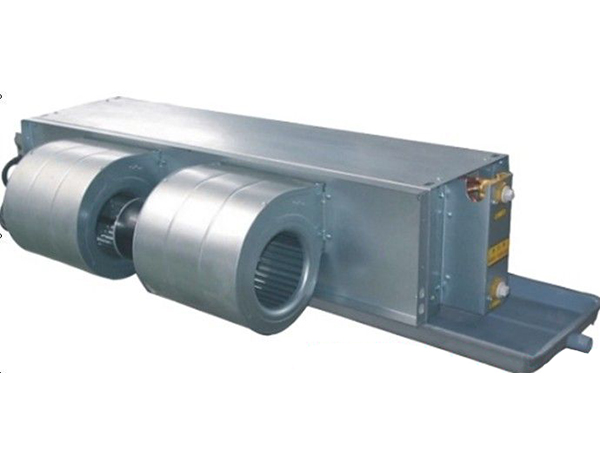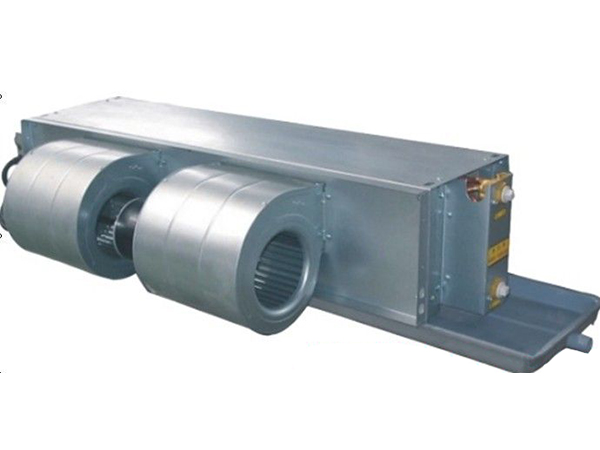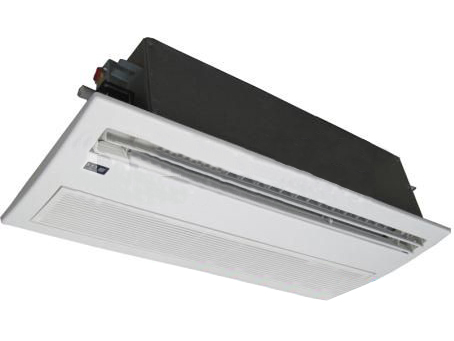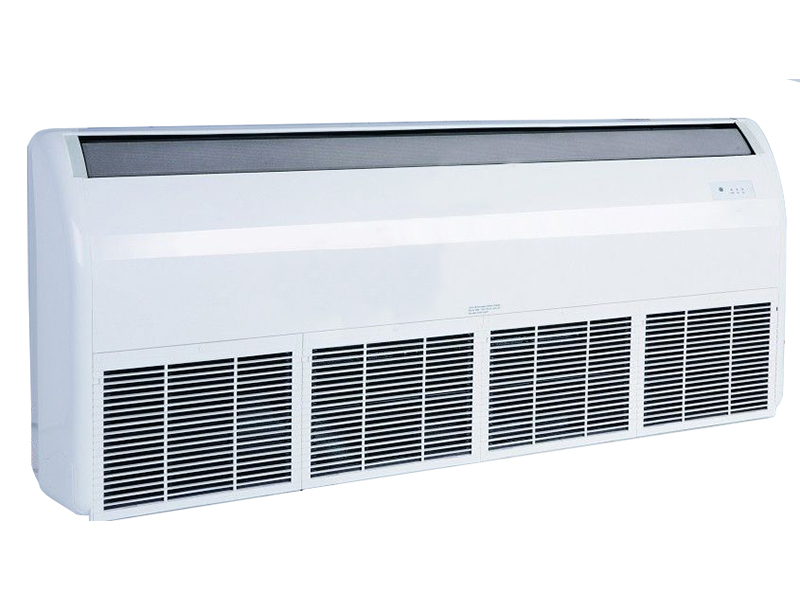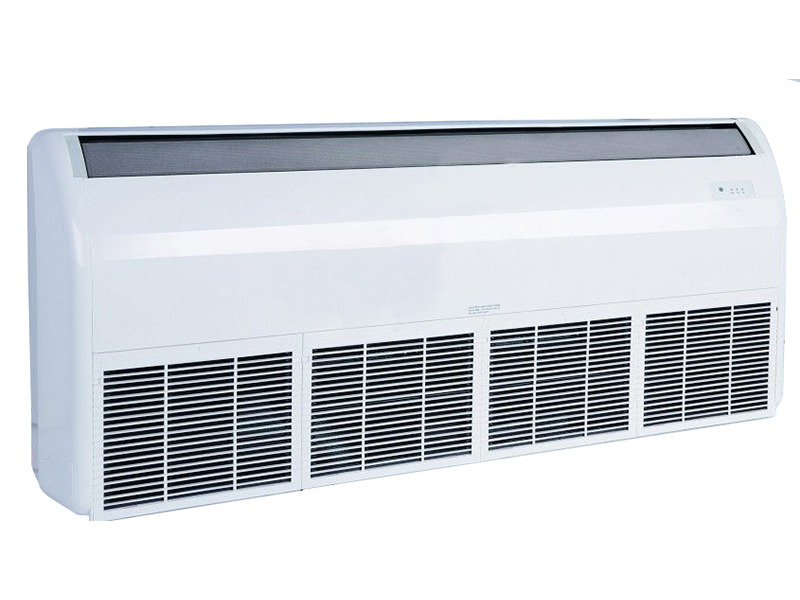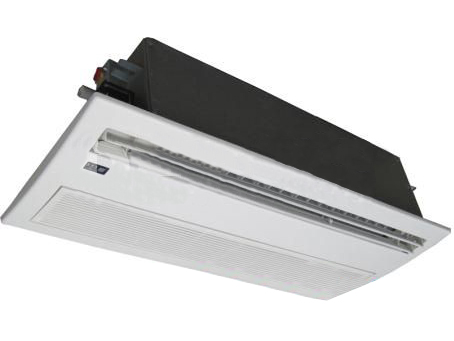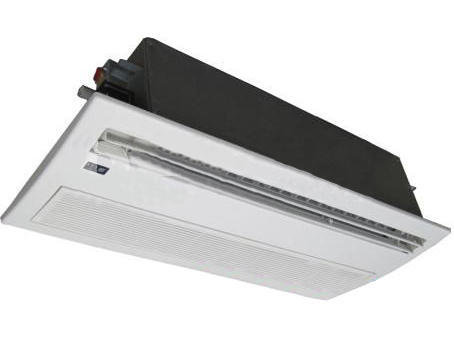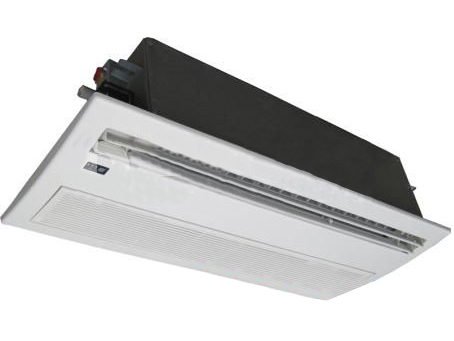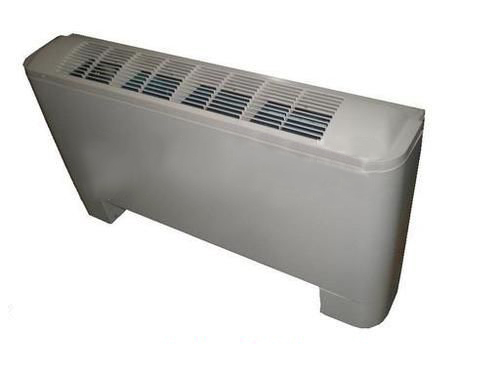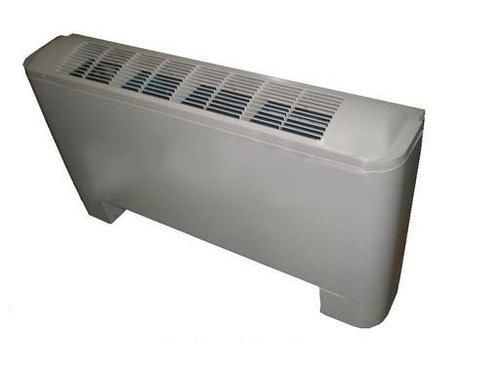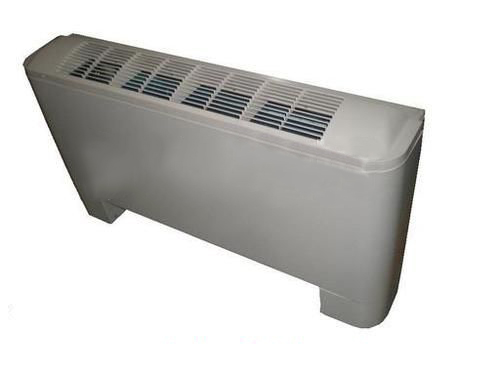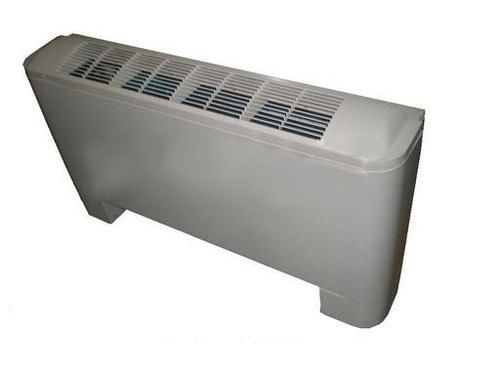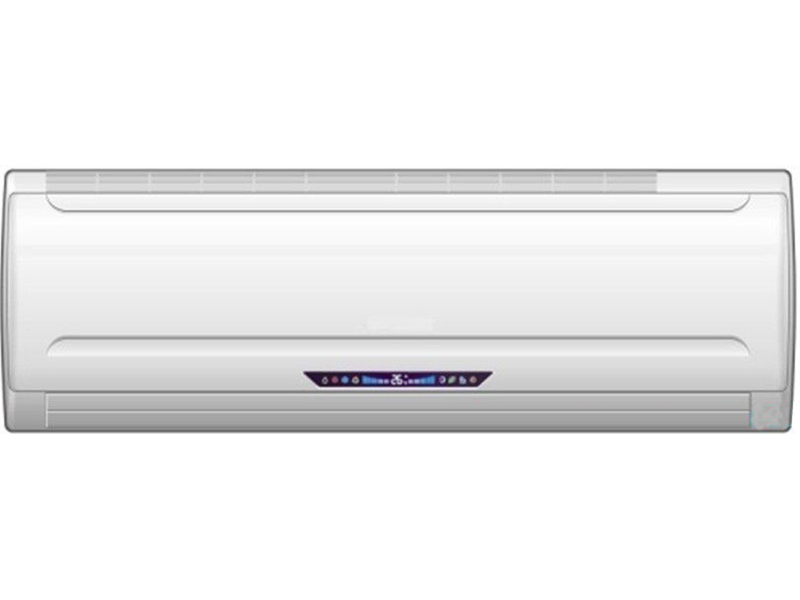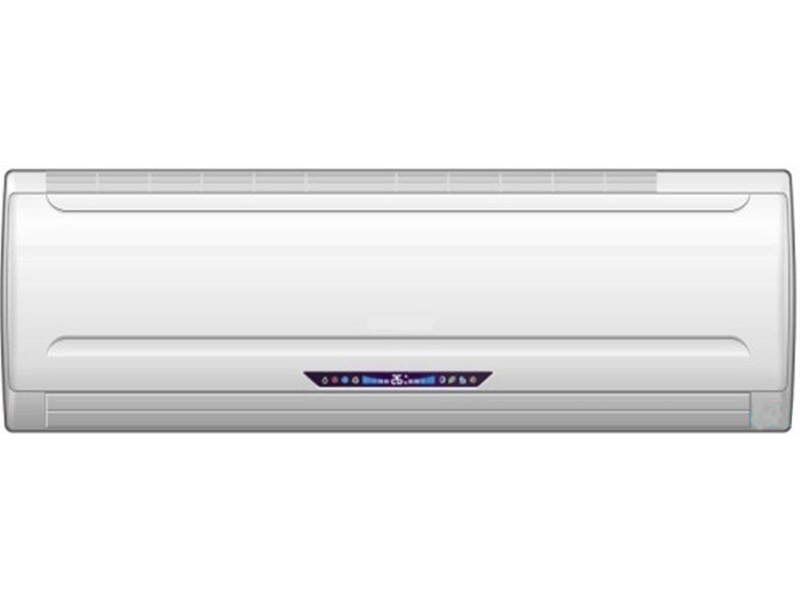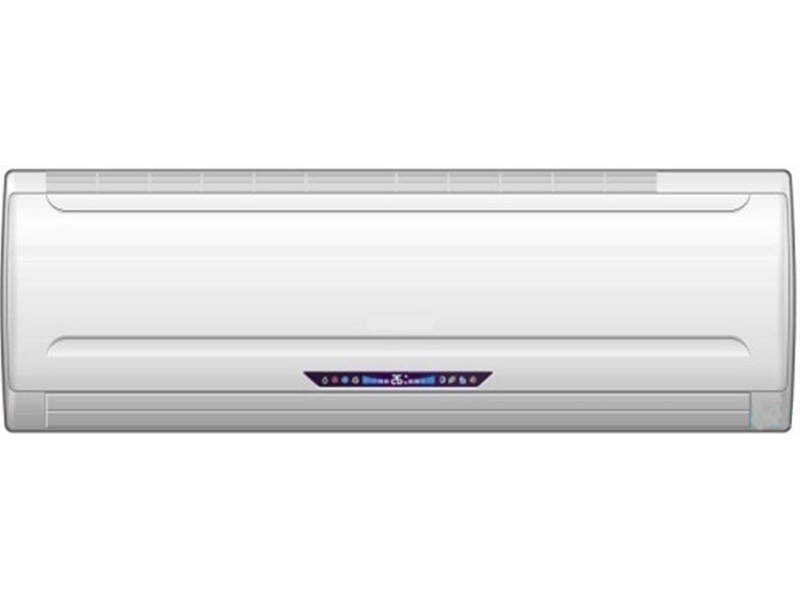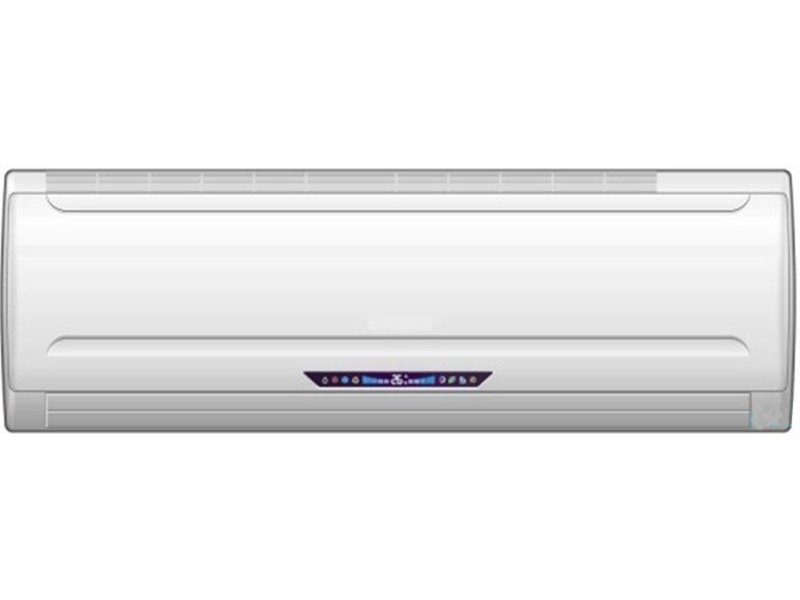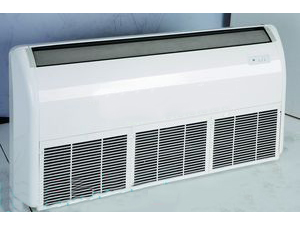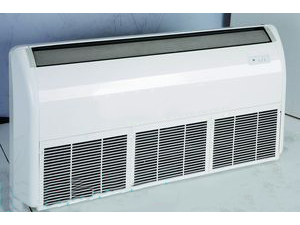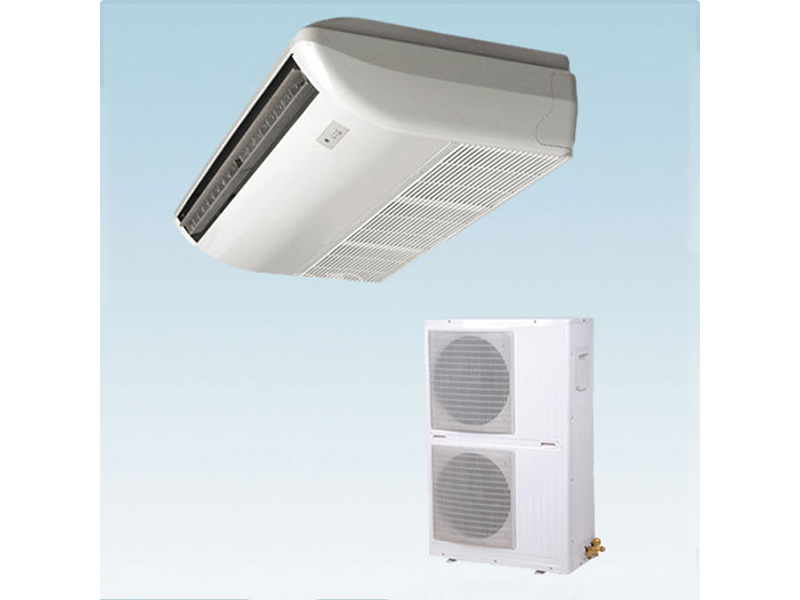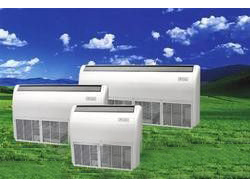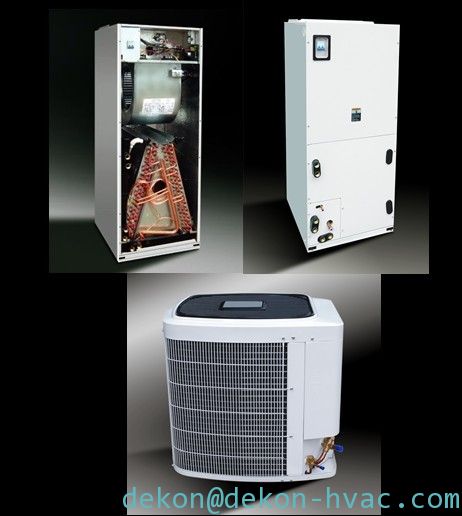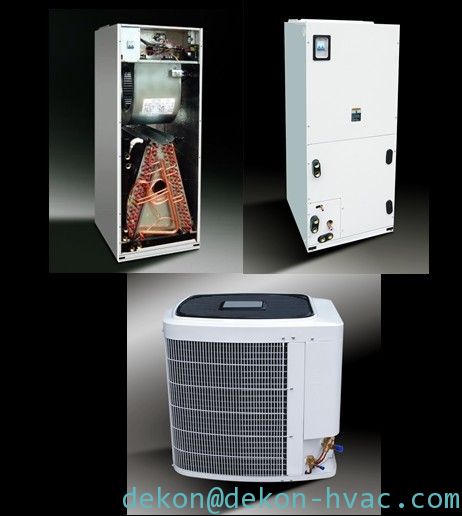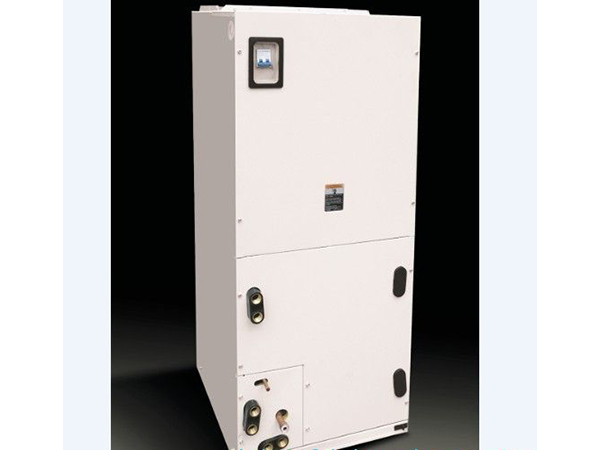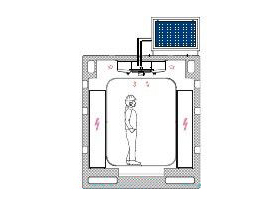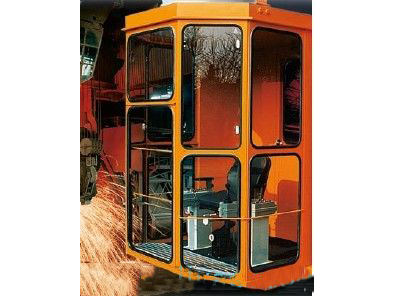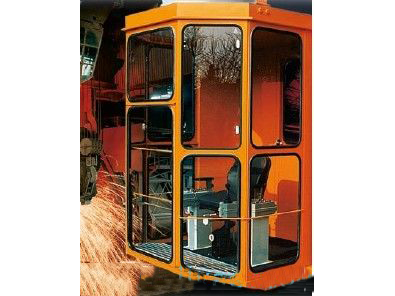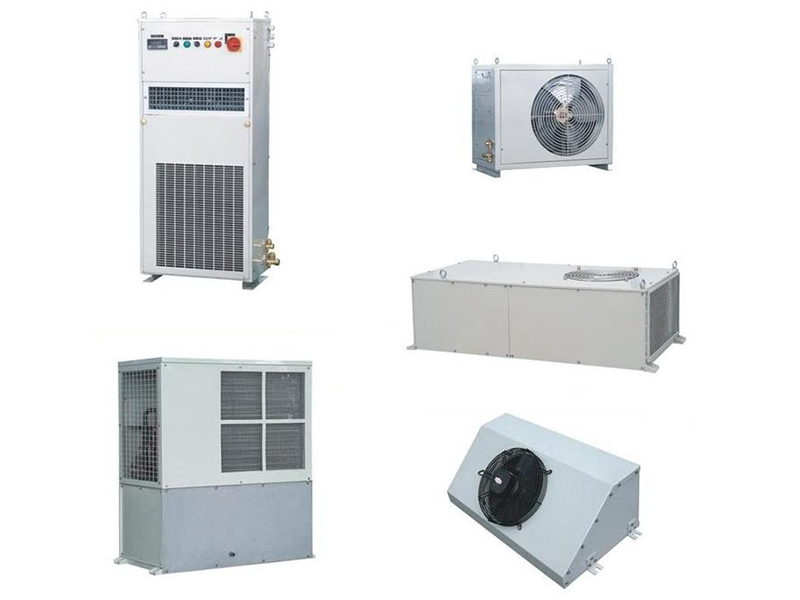-
Environmentally friendly and ventilation projects
Release time:2019-09-02 | Source:HUA LI JI DIAN.Ventilation pipes are metal or composite pipes for ventilation and air-conditioning engineering in industrial and civil buildings, which are municipal infrastructure sprees to allow air circulation and reduce the concentration of harmful gases. Wind control for and installation of the sheet, profile and other major finished materials, should comply with the design and related products of the current national standards, and the application of factory inspection certificate, materials into the market should be in accordance with the relevant national standards for acceptance.
Classification of usesGenerally have: purification system back to the duct, central air-conditioning ventilation pipe, industrial air ducts, environmental protection system suction air ducts, mining extraction gas pipe, mineral coating cloth air cylinder, etc.
Shape classification
Generally have: round, rectangular, spiral, etc.
Processing
Can be divided into angle iron flange duct, a total plate flange duct.
Application
Wind pipe is mainly used in industrial and construction engineering, the application areas mainly involve: electronic industry dust-free plant purification system, pharmaceutical food sterile workshop purification system, hotel hotels, shopping malls hospitals, factories and office slots of the central air conditioning system, industrial pollution control with dust removal, smoke, oil and other exhaust pipes, industrial environment or job comfort with ducts, Coal mine extraction gas with extraction gas system, coal mine environmental control with the return of wind system... Etc. PS: often by film and television, animation development into escape and dive into the dedicated route.
Material GradeBy purpose1、Pipes for purifying air conditioning systems: galvanized plate, stainless steel;2、Central air conditioning system with ducts: galvanized plate, color steel insulation board;Available in glass steel, composites3、Wind pipes for environmental control systems: galvanized plate, stainless steel;4、Wind pipes for industrial ventilation systems: steel plates, galvanized plates;Note: glass and steel ducts can be divided into organic, inorganic two kinds, according to the design specifications have fire protection requirements of the disabled organic materials;5、Wind pipes for special use: plastic-coated ducts for mining, plastic ventilation pipes for mining;
Wind pipe construction1)For more complex civil buildings, in the design phase, each type of work (warm, water drainage, power lighting and construction professional) should first negotiate the separation of space, determine the elevation range of each pipeline. In general, you must not cross the boundaries set by yourself. Individual sections should be consulted with other works if they want to cross the line.
2)Solve the principle of encountering and coordinating all kinds of ventilation ducts, generally: small pipe to let large pipe, pressure to let no pressure. For example, if the water pipe collides with the duct, the water pipe should be turned around. When hot and cold and hot water pipes meet the lower pipes, the hot and cold pipes should be changed.
3)Before the construction should be the equipment master of the engineer, the various types of pipeline, a single line on a floor plan. Use a colored pen for each pipe. At each intersection to integrate its elevation, to see if there are contradictions, timely find, the problem will be resolved before installation.
4)In order to reduce investment, save space, reduce the height of the layer, some laying no slope requirements of the pipe, can be laid through the beam (such as water pipe, fire spray dry pipe, etc.).
Inorganic glass and steelInorganic glass and steel ventilation pipe (also known as glass fiber magnesium chloride cement ventilation pipe) is a pipe made of magnesium chloride cement as a reinforcing material, adding filling materials and modifiers. It has the characteristics of non-combustion, non-combustible material A-grade, corrosion resistance, high strength and light weight. In the ventilation of construction, underground and industrial plants, it has completely replaced the imcom-resistant plexiglass and steel ventilation ducts, and is gradually replacing the galvanized iron ducts with poor corrosion resistance. Especially in the underground project with high humidity and the area south of the Yangtze River, its superiority is more obvious.
Through the research of magnesium chloride geled material and the detection of products, it is found that there are still some quality problems in the production and engineering applications of inorganic glass and steel ventilation pipe. Some quality problems seriously affect the life of the project, should cause sufficient attention.
ClassificationAccording to the national building materials industry standardsJC646-2006,Ventilation pipe is divided into the whole ordinary type of duct, the overall insulation type duct and the combination of insulation type duct three types, the three ventilation pipes are not suitable for residential buildings of the exhaust smoke pipe.
According to the physical mechanical properties and appearance quality of the ventilation ducts, the ventilation ducts are divided into two grades, one grade and one grade.
Product specificationsThe dimensions of ventilation ducts are mainly designed by the design unit according to the amount of ventilation needed by the project, and can also be designed according to the specific requirements of the customer.
The shape of the ventilation ducts is divided into two sections, circular and rectangular. The length of the pipe is generally 2 to 3 m, if the diameter of the circular tube and the edge of the rectangular tube grow to 1.5 m, the length of the pipe section can be appropriately shortened. There are two ways to connect between tube segments: one is a flange connection, and the other is a plug-in connection.
P-tube size\/mm
Pipe length allows deviation
Allowed deviation of circular tube diameter or rectangular tube edge length
The insulation duct is mostly used in the heating and cooling air conditioning project, and its wall thickness is added to the insulation layer. The insulation layer is a polystyrene foam plate or a polyurethane foam sheet. Its thickness is 20 to 30mm.
Hetero-diameter pipe, tee pipe, elbow and other ventilation pipe stoics, in accordance with the corresponding ventilation pipe design and manufacture.
Co-plate flange ducts
Common plate flange duct siphon also known as can not be blue duct, its production form than the traditional rectangular duct processing faster, faster, more convenient, smaller leakage rate. Its advantages are to save materials, reduce investment in engineering, small leakage, reduce energy consumption, save operating costs, popular with construction enterprises. Developed countries such as the United States and Europe have been using duct-in-the-air connections since the 1990s.Pre:NothingNext:NothingRelevant information
Top Categories in Cassette Fan coil unit types-KM
-
Water chilled Ceiling concealed 8 way Cassette Fan coil unit 300CFM -(FP-51KM)
Detailed Product DescriptionWater chilled Cassette Fan coil units KM s...
-
Water chilled Ceiling concealed 8 way Cassette Fan coil unit 400CFM -(FP-68KM)
Detailed Product DescriptionWater chilled Cassette Fan coil units KM s...
-
Water chilled Ceiling concealed 8 way Cassette Fan coil unit 500CFM -(FP-85KM)
Detailed Product DescriptionWater chilled Cassette Fan coil units KM s...
-
Water chilled Ceiling concealed 8 way Cassette Fan coil unit 500CFM -(FP-85KM)
Detailed Product DescriptionWater chilled Cassette Fan coil units KM s...
All Categories
- Water chilled Ceiling concealed 8 way Cassette Fan coil unit 300CFM -(...
- Water chilled Ceiling concealed 8 way Cassette Fan coil unit 400CFM -(...
- Water chilled Ceiling concealed 8 way Cassette Fan coil unit 500CFM -(...
- Water chilled Ceiling concealed 8 way Cassette Fan coil unit 500CFM -(...
- fan coil unit type-Cassette 800CFM -(FP-136KM)
- Water fan coil-(FP-170KM)
- Water chilled Ceiling concealed 8 way Cassette Fan coil unit 1200CFM -...
Top Categories in VRF Air conditioner-ODU
-
fabrica de China acondicionador de aire VRF | inversor de CC Fuera de unidades de puerta tipo modular| 168kw /60HP
Proveedor de China de acondicionador de aire VRF | inversor de CC Fuer...
-
fabrica de China de acondicionador de aire VRF | inversor de CC Fuera de unidades de puerta tipo modular|34HP 95KW
Proveedor de China de acondicionador de aire VRF | inversor de CC Fuer...
-
fabrica de China acondicionador de aire VRF | inversor de CC Fuera de unidades de puerta tipo modular| 184.5kw /66HP
Proveedor de China de acondicionador de aire VRF | inversor de CC Fuer...
-
fabrica de China acondicionador de aire VRF | inversor de CC Fuera de unidades de puerta tipo modular| 146.5kw /52HP
Proveedor de China de acondicionador de aire VRF | inversor de CC Fuer...
All Categories
- fabrica de China acondicionador de aire VRF | inversor de CC Fuera de ...
- fabrica de China de acondicionador de aire VRF | inversor de CC Fuera ...
- fabrica de China acondicionador de aire VRF | inversor de CC Fuera de ...
- fabrica de China acondicionador de aire VRF | inversor de CC Fuera de ...
- VRF DC INVERTER AIR CONDITIONER Out door units
- VRF system with HITACHI compressor(DRV-56)
- fabrica de China acondicionador de aire VRF | inversor de CC Fuera de ...
- fabrica de China acondicionador de aire VRF | inversor de CC Fuera de ...
- fabrica de China acondicionador de aire VRF | inversor de CC Fuera de ...
- fabrica de China de acondicionador de aire VRF | inversor de CC Fuera ...
- Proveedor de China de acondicionador de aire VRF | inversor de CC Fuer...
- Proveedor de China de acondicionador de aire VRF | inversor de CC Fuer...
- fabrica de China de acondicionador de aire VRF | inversor de CC Fuera ...
- fabrica de China de acondicionador de aire VRF | inversor de CC Fuera ...
- fabrica de China de acondicionador de aire VRF | inversor de CC Fuera ...
- fabrica de China de acondicionador de aire VRF | inversor de CC Fuera ...
- fabrica de China de acondicionador de aire VRF | inversor de CC Fuera ...
- fabrica de China de acondicionador de aire VRF | inversor de CC Fuera ...
- fabrica de China acondicionador de aire VRF | inversor de CC Fuera de ...
- fabrica de China acondicionador de aire VRF | inversor de CC Fuera de ...
- fabrica de China acondicionador de aire VRF | inversor de CC Fuera de ...
- fabrica de China acondicionador de aire VRF | inversor de CC Fuera de ...
- fabrica de China acondicionador de aire VRF | inversor de CC Fuera de ...
- fabrica de China acondicionador de aire VRF | inversor de CC Fuera de ...
- fabrica de China acondicionador de aire VRF | inversor de CC Fuera de ...
- fabrica de China acondicionador de aire VRF | inversor de CC Fuera de ...
- fabrica de China acondicionador de aire VRF | inversor de CC Fuera de ...
- fabrica de China acondicionador de aire VRF | inversor de CC Fuera de ...
Top Categories in VRF Air conditioner-IDU
-
China good quality VRF Unit factory| ceiling cassette type indoor unit | 16KW| 360° round way flow air outlet
DEKON VRF air conditioner China good quality VRF Factory for years.Dek...
-
VRF system indoor unit cassette type
Detailed Product DescriptionVRF air conditioner,with below features:1....
-
VRF system indoor unit wall type
Detailed Product DescriptionVRF air conditioner,with below features:1....
-
VRF system indoor unit ceiling concealed high pressure type
Detailed Product DescriptionDEKON VRF air conditioner,with below featu...
All Categories
- China good quality VRF Unit factory| ceiling cassette type indoor unit...
- VRF system indoor unit cassette type
- VRF system indoor unit wall type
- VRF system indoor unit ceiling concealed high pressure type
- VRF system indoor unit ceiling concealed mid pressure type
- VRF Air conditioner indoor unit ceiling floor type
- VRF Air conditioner indoor unit cassette type
- VRF air conditioner indoor unit ceiling floor type
- VRF Air conditioner indoor unit ceiling concealed type
- VRF air conditioner indoor unit ceiling floor type
- VRF air conditioner indoor unit ceiling concealed high pressure type
- VRF air conditioner indoor unit ceiling concealed slim design
- VRF air conditioner indoor unit cassette type
- VRF AIR CONDITIONER Out door units DC INVERTER technology
- VRF AIR CONDITIONER Out door units DC INVERTER technology
- EOT crane E house fitted High temperature AC
- VRF air conditioner indoor unit wall type
- VRF air conditioner cassette type indoor unit 2.8KW 360° air outlet ro...
- Dekon VRF air conditioner cassette type indoor unit 3.6KW 360° air out...
- Dekon VRF air conditioner cassette type indoor unit 4.5KW 360° air out...
- Dekon VRF air conditioner cassette type indoor unit 5.0KW 360° air out...
- Dekon VRF air conditioner cassette type indoor unit 5.6KW 360° air out...
- Dekon VRF air conditioner cassette type indoor unit 6.3KW 360° air out...
- China good quality VRF air conditioner|cassette type indoor unit | 240...
- China good quality VRF air conditioner supplier|cassette type indoor u...
- China good quality VRF air conditioner factory|cassette type indoor un...
- China good quality VRF Unit factory|cassette type indoor unit | 11.2KW...
- China good quality VRF Unit factory|cassette type indoor unit | 11.2KW...
Top Categories in Air cooled Chiller system
-
Air cooled water chiller screw type
Detailed Product Description unit style CMA200DNCooling capacitykW700I...
-
Air cooled chiller modular type with heat pump-20TR
Air cooled chiller modular chiller-20TRThe unit shell is made of galva...
-
Air cooled chiller modular type with heat pump-20TR
Air cooled chiller modular chiller-20TRThe unit shell is made of galva...
-
Air cooled chiller modular type with 122kw capacity-35TR scroll chiller
Detailed Product DescriptionAir cooled chiller modular type with 122kw...
All Categories
- Air cooled water chiller screw type
- Air cooled chiller modular type with heat pump-20TR
- Air cooled chiller modular type with heat pump-20TR
- Air cooled chiller modular type with 122kw capacity-35TR scroll chille...
- Air cooled screw chiller 200TR with heat pump optional(CMA200DN)
- Air cooled chiller screw type 200TR with heat pump (CMA200DN)
- Air cooled screw chiller 700KW with heat pump
- Air cooled chiller modular type with heat pump-40TR
- Air cooled screw chiller 1500KW-with heat pump optional
- Air cooled screw chiller 1120KW-with heat pump optional
- Air cooled screw chiller 930KW-with heat pump optional
- Air cooled screw chiller 840KW-with heat pump optional
- Air cooled screw chiller 560KW-with heat pump optional
- Air cooled screw chiller 740KW-with heat pump optional
- Air cooled screw chiller 370KW-with heat pump optional
- Air cooled screw chiller 700KW with heat pump
- Air cooled screw chiller 150TR
- Air cooled chiller screw type 200TR with heat pump (CMA200DN)
- Air cooled chiller screw type 100TR with R134a gas
- High efficiency screw compressor heat pump chiller
- R22 gas Air cooled chiller screw type 390TR with heat pump ASWC-HC390
- Air cooled heat pump-40TR
- Air cooled chiller modular chiller
- Air cooled chiller modular type with 122kw capacity- 122x4=130TR scrol...
- Air cooled screw chiller 200TR with R134A Gas
- Air cooled chiller modular chiller
- Bitzar compressor Air cooled screw chiller
- Bitzar compressor Air cooled screw chiller
Top Categories in Water cooled chiller system
-
Centrifugal water cooled chiller
Detailed Product Description LC Centrifugal water chiller:LC series of...
-
Water cooled chiller Centrifugal type for Nuclear Power Station
Detailed Product Description LC Centrifugal water chiller:LC series of...
-
Centrifugal Water cooled chiller
Detailed Product Description Water-cooled Screw Chiller Refrigerant: R...
-
Water cooled chiller Centrifugal type for Nuclear Power Station
Detailed Product Description LC Centrifugal water chiller:LC series of...
All Categories
- Centrifugal water cooled chiller
- Water cooled chiller Centrifugal type for Nuclear Power Station
- Centrifugal Water cooled chiller
- Water cooled chiller Centrifugal type for Nuclear Power Station
- Water cooled screw chiller
- low temperature Centrifugal water cooled chiller
- Centrifugal water chiller-twin compressor
- Twin compressor Centrifugal water chiller
- Centrifugal Chiller for Nuclear Power Station
- Centrifugal water Chiller for Nuclear Power Station
- Centrifugal water chiller
- Centrifugal water chille
- Twin compressor Centrifugal water cooled chiller
- Centrifugal water cooled chiller Twin compressor
- Centrifugal water cooled chiller
- Centrifugal water cooled Chiller for Nuclear Power Station
- Centrifugal water cooled Chiller for Nuclear Power Station
- Twin compressor Centrifugal water chiller
- Centrifugal water Chiller for Nuclear Power Station
- Centrifugal water Chiller for Nuclear Power Station
- Centrifugal water chiller
- Centrifugal water chiller Twin compressor
- Twin compressor Centrifugal water chiller
- Centrifugal Water chiller
- Twin compressor Centrifugal chiller
- Centrifugal water Chiller for Nuclear Power Station
- Centrifugal water Chiller for Nuclear Power Station
- Centrifugal water Chiller 2000TR capacity for T3 conditions
Top Categories in Cassette Fan coil unit types-E
-
Water chilled ceiling concealed Cassette Fan coil units 2 tubes 1200CFM-(FP-204CA-E)
Detailed Product Description model(2 tube system)FP-102CA-EFP-136CA-EF...
-
Water chilled ceiling concealed Cassette Fan coil units 2 tubes 1400CFM-(FP-238CA-E)
Detailed Product Description model(2 tube system)FP-102CA-EFP-136CA-EF...
-
Water chilled ceiling concealed Cassette Fan coil units 2 tubes 200CFM-(FP-34CA-E)
Detailed Product Description model(2 tube system)FP-34CA-EFP-51CA-EFP-...
-
Water chilled ceiling concealed Cassette Fan coil units 2 tubes 300CFM-(FP-51CA-E)
Detailed Product Description model(2 tube system)FP-34CA-EFP-51CA-EFP-...
All Categories
- Water chilled ceiling concealed Cassette Fan coil units 2 tubes 1200CF...
- Water chilled ceiling concealed Cassette Fan coil units 2 tubes 1400CF...
- Water chilled ceiling concealed Cassette Fan coil units 2 tubes 200CFM...
- Water chilled ceiling concealed Cassette Fan coil units 2 tubes 300CFM...
- Water chilled ceiling concealed Cassette Fan coil units 2 tubes 400CFM...
- Water chilled ceiling concealed Cassette Fan coil units 2 tubes 500CFM...
- Water chilled Ceiling conceiled Cassette Fan coil units 4 tubes 200CFM...
- Water chilled Ceiling conceiled Cassette Fan coil units 4 tubes 300CFM...
- Fan coil unit type-cassette water fan coil(FP-68CA-E4)
- fan coil unit type-cassette four ways(FP-85CA-E4)c
- Water chilled Ceiling conceiled Cassette Fan coil units 4 tubes 800CFM...
- Water chilled ceiling concealed Cassette Fan coil units 2 tubes 800CFM...
- Water chilled ceiling concealed Cassette Fan coil units 2 tubes 1000CF...
- Water chilled Ceiling conceiled Cassette Fan coil units 4 tubes 600CFM...
- Water chilled Ceiling conceiled Cassette Fan coil units 4 tubes 1000CF...
- Water chilled Ceiling conceiled Cassette Fan coil units 4 tubes 1200CF...
- Water chilled Ceiling conceiled Cassette Fan coil units 4 tubes 1400CF...
- Water chilled Ceiling conceiled Cassette Fan coil units 4 tubes 1400CF...
- Water chilled ceiling concealed Cassette Fan coil units 2 tubes 600CFM...
Top Categories in Cassette Fan coil unit types-K
-
Four Way Cassette Type Fan Coil with DC Motor (FP-204CA/4KD)
Detailed Product DescriptionApplication:CommercialType:Fan Coil UnitFo...
-
Four Way Cassette Type Fan Coil with DC Motor (FP-238CA/4KD)
Detailed Product DescriptionApplication:CommercialType:Fan Coil UnitFo...
-
Four Way Cassette Type Fan Coil with DC Motor (FP-102CA/4KD)
Detailed Product DescriptionApplication:CommercialType:Fan Coil UnitFo...
-
DC Motor Four Way Cassette Fan Coil units(FP-85CA/4KD)
Detailed Product DescriptionApplication:CommercialType:Fan Coil UnitFo...
All Categories
- Four Way Cassette Type Fan Coil with DC Motor (FP-204CA/4KD)
- Four Way Cassette Type Fan Coil with DC Motor (FP-238CA/4KD)
- Four Way Cassette Type Fan Coil with DC Motor (FP-102CA/4KD)
- DC Motor Four Way Cassette Fan Coil units(FP-85CA/4KD)
- DC Motor Four Way Cassette Fan Coil units(FP-68CA/4KD)
- DC Motor Four Way Cassette Fan Coil units(FP-51CA/4KD)
- DC Motor Cassette Fan Coil units(FP-34CA/KD)
- DC Motor Cassette Fan Coil units(FP-51CA/KD)
- DC Motor Cassette Fan Coil units(FP-68CA/KD)
- DC Motor Cassette Fan Coil units(FP-85CA/KD)
- DC Motor four way Cassette Fan Coil units(FP-102CA/KD)
- DC Motor four way Cassette Fan Coil units(FP-136CA/KD)
- DC Motor four way Cassette Fan Coil units(FP-170CA/KD)
- DC Motor four way Cassette Fan Coil units(FP-204CA/KD)
Top Categories in Ceiling concealed-fan coil unit types
-
Ceiling concealed duct fan coil unit
Detailed Product DescriptionType:Central Air ConditionersCooling/Heati...
-
Ceiling concealed duct fan coil unit- 340CFM (2 tubes)
Detailed Product DescriptionType:Central Air ConditionersCooling/Heati...
-
Ceiling concealed duct fan coil unit- 510CFM (2 tubes)
Detailed Product DescriptionCooling/Heating:Cooling/HeatingCeiling con...
-
Ceiling concealed duct fan coil uint-680CFM (2 tubes)
Detailed Product DescriptionCooling/Heating:Cooling/HeatingCeiling con...
All Categories
- Ceiling concealed duct fan coil unit
- Ceiling concealed duct fan coil unit- 340CFM (2 tubes)
- Ceiling concealed duct fan coil unit- 510CFM (2 tubes)
- Ceiling concealed duct fan coil uint-680CFM (2 tubes)
- Ceiling concealed duct fan coil uint-680CFM (2 tubes)
- Ceiling concealed duct fan coil unit-850 CFM (2-TUBES)
- Ceiling concealed duct fan coil unit- 1020 CFM ( 2 tubes)
- Ceiling concealed duct fan coil unit-1360CFM (2 TUBES)
- Ceiling concealed duct fan coil unit- 1700CFM (2 TUBES)
- Ceiling concealed duct fan coil unit-2040CFM (2 TUBES)
- Ceiling concealed duct fan coil unit-2380CFM ( 2 tubes)
- Ceiling concealed duct fan coil unit-340CFM (4 tubes)
- Ceiling concealed duct fan coil unit-510CFM ( 4 tubes)
- Ceiling concealed duct fan coil unit-680CFM (4 tubes)
- Ceiling concealed duct fan coil unit-850 CFM (4 tubes)
- Ceiling concealed duct fan coil unit-1020CFM (4 tubes)
- Ceiling concealed duct fan coil-1360CFM (4 tubes)
- water fan coil-Ceiling concealed duct fan coil unit type-170CFM(4 tube...
- water fan coil-Ceiling concealed type-2040CFM (4 tubes)
- Fan Coil units with EC Motor(FP-85WA/E)
- Ceiling concealed Fan Coil units with EC Motor(FP-204WA/E)
- Ceiling concealed Fan Coil units with EC Motor(FP-238WA/E)
- Ceiling concealed Fan Coil units with EC Motor(FP-238WA/4E)
- Ceiling concealed Fan Coil units with EC Motor(FP-204WA/4E)
- EC Motor Ceiling concealed Fan Coil 4 pipe system (FP-170WA/4E)
- EC Motor Ceiling concealed Fan Coil with 4 pipe system (FP-68WA/4E)
- Fan Coil units with EC Motor 4 pipe system(FP-85WA/4E)
- Ceiling concealed Fan Coil units with EC Motor 4 pipe (FP-102WA/4E)
Top Categories in Ceiling floor fan coil unit types
-
One way cassette fan coil units-4tubes
Detailed Product DescriptionmodelFP-34O-4FP-51O-4FP-68O-4FP-85O-4power...
-
Ceiling floor type fan coil units 2 tubes 1200CFM-FP-204CF)
Detailed Product DescriptionPower (W):189Voltage (V):220Use:RoomPower ...
-
Ceiling floor type fan coil units 2 tubes 1000CFM-(FP-170CF)
Detailed Product DescriptionPower (W):152Voltage (V):220Use:RoomPower ...
-
Ceiling floor type fan coil units 2 tubes 800CFM-(FP-136CF)
Detailed Product DescriptionPower (W):134Voltage (V):220Use:RoomPower ...
All Categories
- One way cassette fan coil units-4tubes
- Ceiling floor type fan coil units 2 tubes 1200CFM-FP-204CF)
- Ceiling floor type fan coil units 2 tubes 1000CFM-(FP-170CF)
- Ceiling floor type fan coil units 2 tubes 800CFM-(FP-136CF)
- Water chilled Ceiling floor fan coil units 2 tubes 400CFM-FP-68CF
- Water chilled Ceiling floor fan coil units 2 tubes 500CFM-FP-85CF
- Water chilled Ceiling floor type fan coil units 2 tubes 1400CFM-(FP-23...
Top Categories in One way cassette fan coil unit types
-
Water chilled One way ceiling concealed cassette fan coil unit-FCU 200CFM-(FP-34O)
Detailed Product Description modelFP-34OFP-51OFP-68OFP-85Opower supply...
-
Water chilled One way ceiling concealed cassette fan coil unit-FCU 300CFM-(FP-51O)
Detailed Product Description modelFP-34OFP-51OFP-68OFP-85Opower supply...
-
Water chilled One way ceiling concealed cassette fan coil unit-FCU 400CFM-(FP-68O)
Detailed Product Description modelFP-34OFP-51OFP-68OFP-85Opower supply...
-
Water chilled One way ceiling concealed cassette fan coil unit-FCU 500CFM-(FP-68O)
Detailed Product Description modelFP-34OFP-51OFP-68OFP-85Opower supply...
All Categories
- Water chilled One way ceiling concealed cassette fan coil unit-FCU 200...
- Water chilled One way ceiling concealed cassette fan coil unit-FCU 300...
- Water chilled One way ceiling concealed cassette fan coil unit-FCU 400...
- Water chilled One way ceiling concealed cassette fan coil unit-FCU 500...
- Water chilled One way ceiling concealed cassette fan coil unit 4tube-F...
- Water chilled One way ceiling concealed cassette fan coil unit 4tube-F...
- fan coil unit type-cassette one way(FP-68O-4)
Top Categories in Universal Fan coil unit types
-
Water chilled Universal free stand type Fan coil units 1000CFM 4 TUBES-(FP-170U-4)
Detailed Product Description modelFP-102U-4FP-136U-4FP-170U-4FP-204U-4...
-
Water chilled Universal free stand type Fan coil units 1400CFM 4 TUBES-(FP-238U-4)
Detailed Product Description modelFP-102U-4FP-136U-4FP-170U-4FP-204U-4...
-
Water chilled Universal free stand type Fan coil units 1200CFM 4 TUBES-(FP-204U-4)
Detailed Product Description modelFP-102U-4FP-136U-4FP-170U-4FP-204U-4...
-
Water chilled Universal free stand type Fan coil units 800CFM 4 TUBES-(FP-136-4)
Detailed Product Description modelFP-102U-4FP-136U-4FP-170U-4FP-204U-4...
All Categories
- Water chilled Universal free stand type Fan coil units 1000CFM 4 TUBES...
- Water chilled Universal free stand type Fan coil units 1400CFM 4 TUBES...
- Water chilled Universal free stand type Fan coil units 1200CFM 4 TUBES...
- Water chilled Universal free stand type Fan coil units 800CFM 4 TUBES-...
- Water chilled Universal free stand type Fan coil units 600CFM 4 TUBES-...
- Water chilled Universal free stand type Fan coil units 300CFM-4 tubes(...
- Water chilled Universal free stand type Fan coil units 400CFM-4 tubes(...
- Water chilled Universal free stand type Fan coil units 500CFM-4 tubes(...
- Water chilled Universal free stand type Fan coil units 300CFM 2 TUBES-...
- Water chilled Universal free stand Fan coil units 400CFM 2 TUBES-(FP-6...
- Water chilled Universal free stand type Fan coil units 400CFM 2 TUBES-...
- Water chilled Universal free stand type Fan coil units 500CFM 2 TUBES-...
- Water chilled Universal stand type Fan coil units 200CFM-4 tubes(FP-34...
- Water chilled Universal stand type Fan coil units 200CFM 2 TUBES-(FP-3...
Top Categories in Wall split Fan coil unit types
-
High wall mounted type fan coil unti
Detailed Product DescriptionHigh wall fan coil unit in 2 tubes model(2...
-
Wall split type fan coil unit with valve inside
Detailed Product DescriptionHigh wall fan coil unit in 2 tubes with va...
-
water chilled high wall fan coil unit in 2 tubes
Detailed Product Descriptionwater chilled high wall fan coil unit in 2...
-
water fan coil
Detailed Product DescriptionWater fan coil- wall split typeWall split ...
All Categories
Top Categories in Light commercial A/C
-
CONSOLA PISO-TECHO Aire Acondicionado
Detailed Product Description CONSOLA PISO-TECHO AIRE ACONDICIONADO Ai...
-
CONSOLA PISO-TECHO TIPO
Detailed Product Description CONSOLA PISO-TECHO TIPO Aire Acondiciona...
-
aire acondicionado piso techo tipo
Detailed Product DescriptionUse:Aire Acondicionado Piso Techo TipoAire...
-
aire acondicionado piso techo tipo
Detailed Product DescriptionUse:Aire Acondicionado Piso TechoAire acon...
All Categories
Top Categories in Air handling Units
-
Equipos aires acondicionados de split ducto
Detailed Product DescriptionUse:Equipos Aires Acondicionados Split Duc...
-
Equipos aires acondicionados de split ducto
Detailed Product DescriptionUse:Equipos Aires AcondicionadosEquipos ai...
-
Equipos aires acondicionados de split ducto
Detailed Product DescriptionUse:Equipos Aires AcondicionadosEquipos ai...
-
Equipos aires acondicionados de split ducto
Detailed Product DescriptionUse:Equipos Aires AcondicionadosEquipos ai...
All Categories
- Equipos aires acondicionados de split ducto
- Equipos aires acondicionados de split ducto
- Equipos aires acondicionados de split ducto
- Equipos aires acondicionados de split ducto
- Equipos aires acondicionados de split ducto
- Suspendido en Techo horizontal UNIDADES MANEJADORAS DE AIRE (UMA)
- horizontal UNIDADES MANEJADORAS DE AIRE (UMA) Suspendido en Techo
- UNIDADES MANEJADORAS DE AIRE horizontal TIPO (UMA) Suspendido en Techo
- Suspendido en Techo horizontal decarga horizontal UNIDADES MANEJADORAS...
- horizontal UNIDADES MANEJADORAS DE AIRE (UMA)
- Vertical UNIDADES MANEJADORAS DE AIRE (UMA)
- Horizontal air handling units ceiling concealed type
- Modular design Air Handling Units-AHU for hospical
- Air handling units with prefilter and Hepa filter
Top Categories in Industrial Air conditioner
-
Coking plants high temperature air conditioner
Detailed Product Description In heavy industry field such as steel wor...
-
steel works high temperature air conditioner
Detailed Product Description In heavy industry field such as steel wor...
-
HIGH TEMPERATURE AC UNITS( AMBIENT TEMP 65C) FOR EOT CRANE APPLICATION
Detailed Product DescriptionHIGH TEMPERATURE AC UNITS( AMBIENT TEMP ...
-
HIGH TEMPERATURE Air conditioner FOR EOT CRANE APPLICATION
Detailed Product DescriptionHIGH TEMPERATURE AC UNITS( AMBIENT TEMP ...
All Categories

